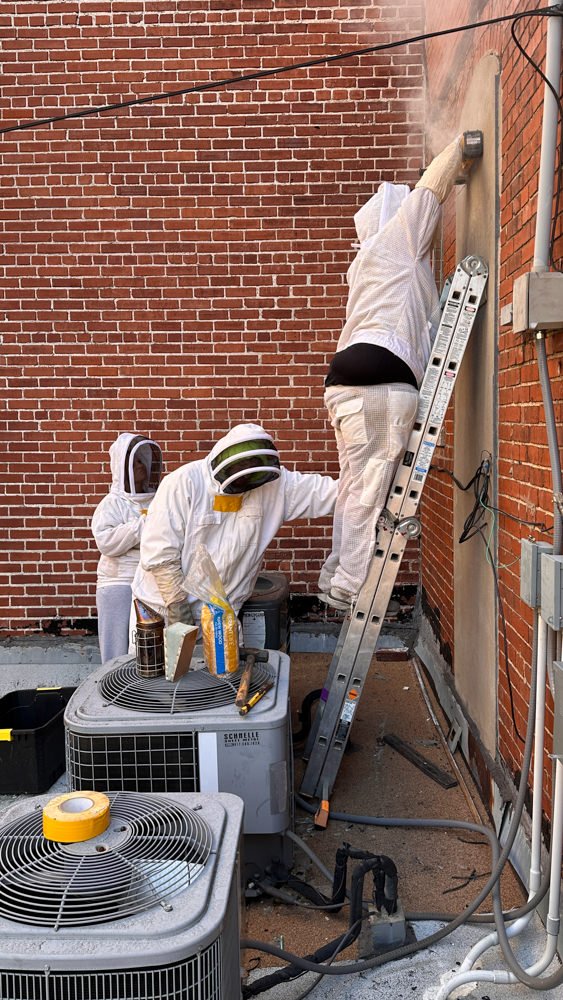
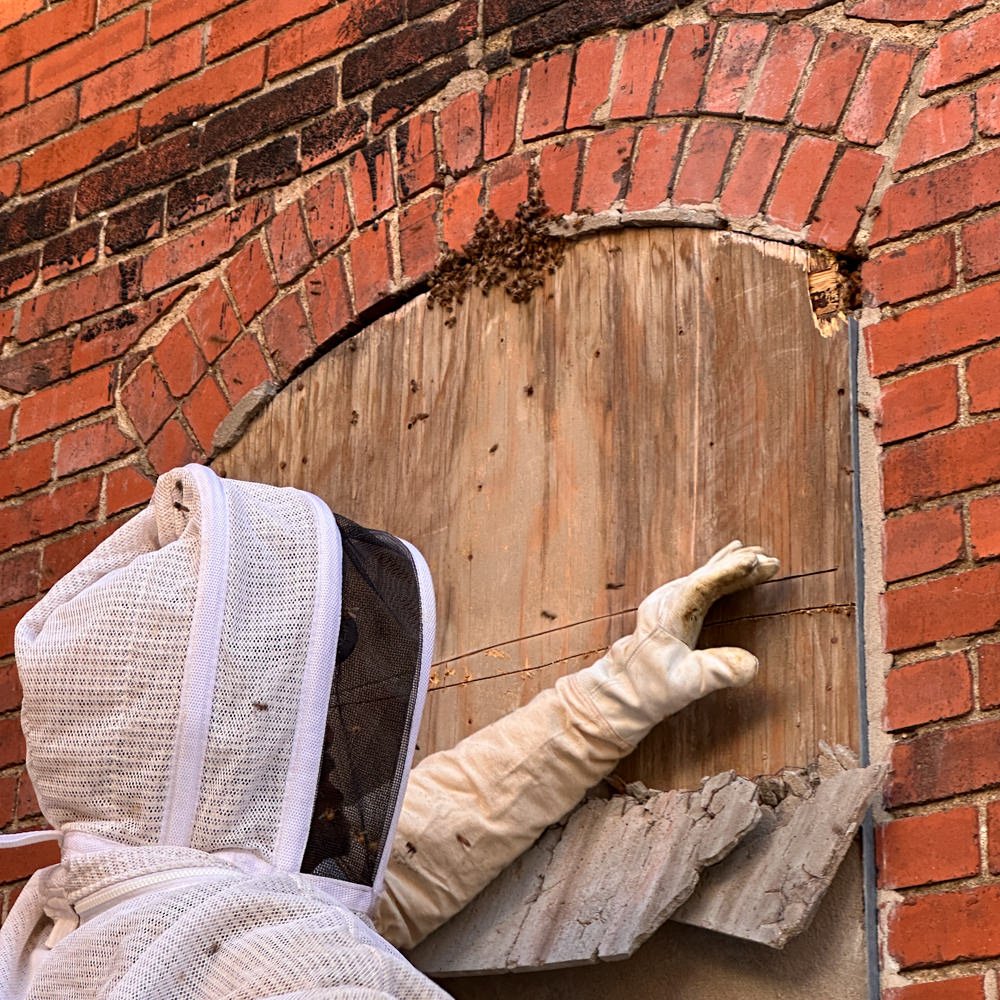
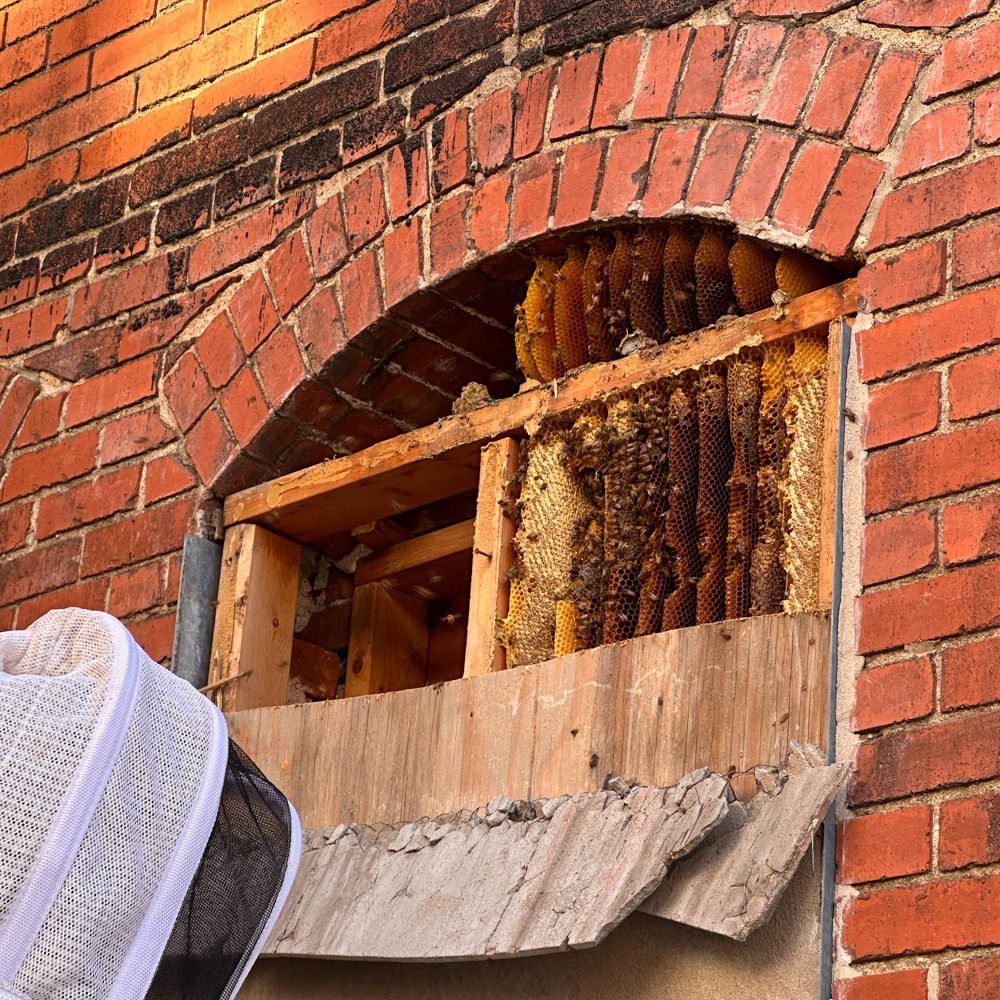
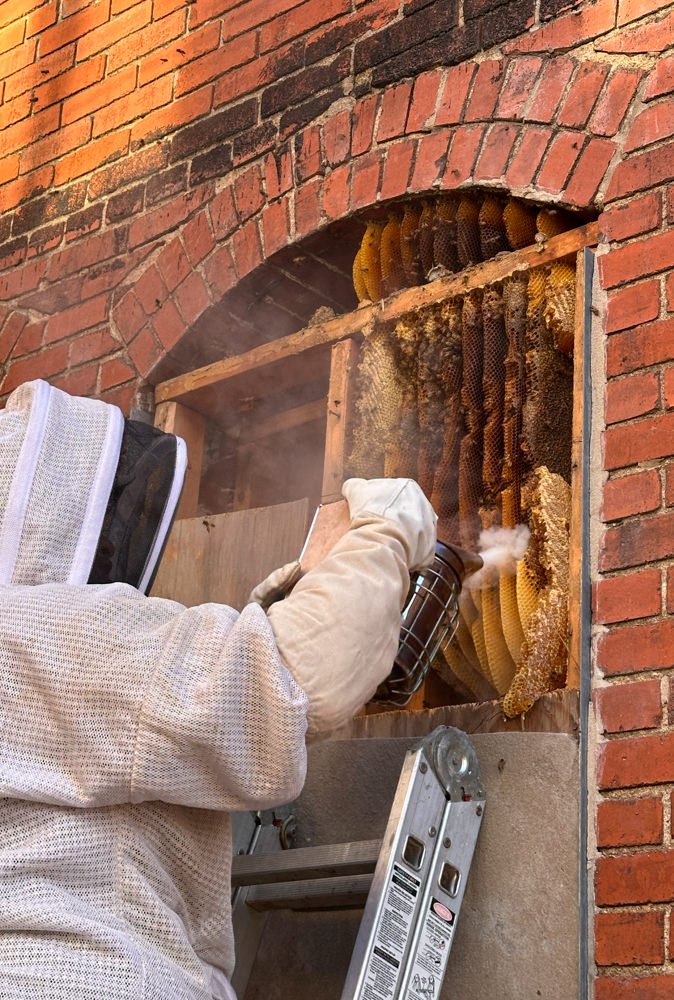
Bob Foos
For months, Ann and Bob Foos, couldn’t find a clue as to why on occasion they’d find dead bees inside their downtown apartment.
Finally, when some electrical work was being done outside, scores of bees were seen going in and out of a gap where decades earlier a door had been closed up.
Pest exterminators they called declined to help. A search on Google Maps led them to a Joplin beekeeper, John Smiles, of Hive2Honey. Smiles, equipped with a smartphone that can detect heat, was sure there was a rather large nest located in the cavity of that old doorway.
He made an appointment to return on a Saturday at sunrise, when the bees would be less active.
After covering themselves in beekeeper protective outfits, John, his daughter Jade and son Jamarcus, began the process of removing the nest.
John’s smartphone had been correct about the location. He sawed off that area to find the colony of hundreds of bees and the series of honey combs they have been building for, he estimated, three years.
He didn’t consider it a large nest. “Oh no. We’ve had them a lot bigger and some smaller.”
John vacuumed as many bees as he could into a portable beehive. Then he used a kitchen knife to cut the combs and hand them down to be collected in a tub.
Jade pointed out comb cells filled with baby bees that haven’t left the nest yet.
After a couple of hours, nearly all of the nest had been removed.
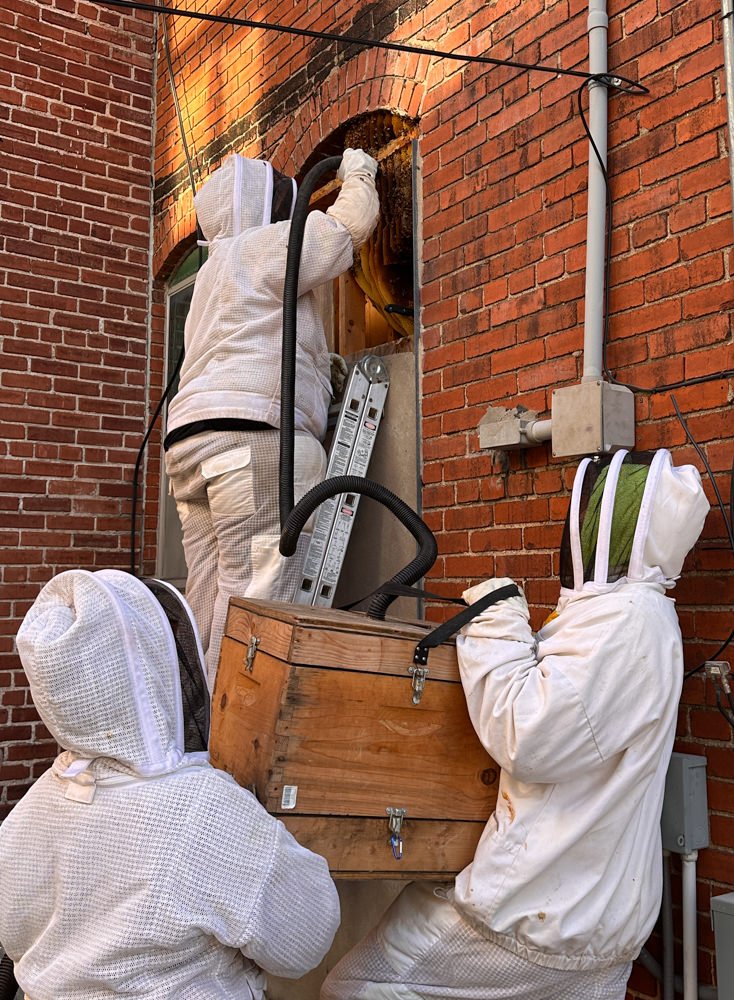
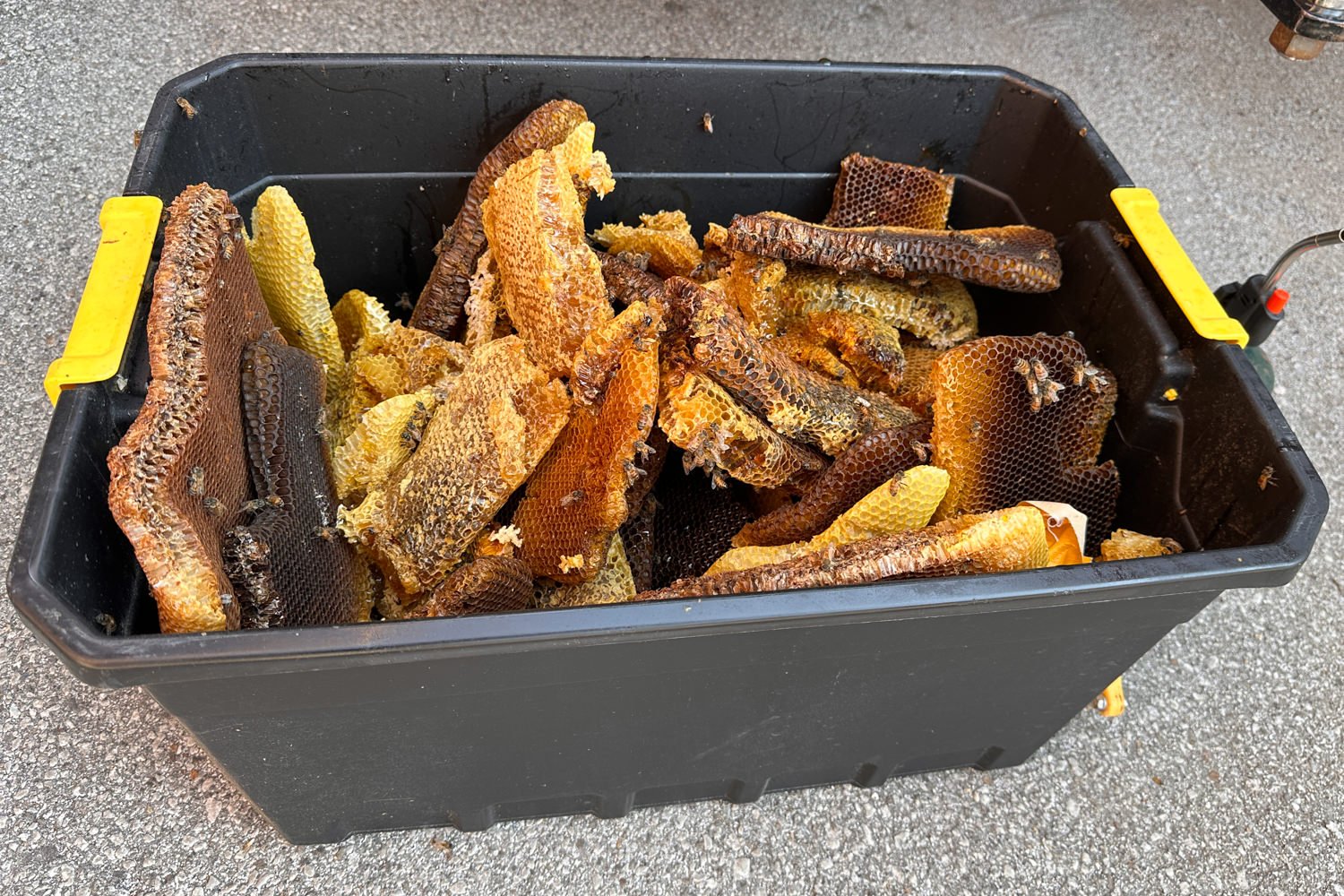
That tub of honey combs will be used to acclimate the bees to their new home at Hive2Honey.
John said they attach the combs to frames so that “it feels like home, it smells like home to them.”
He’ll also press out some of the honey to “feed back” to the displaced bees while they transition to their new home.
“It takes them a little bit to get used to where everything’s at and find the nectar and find pollen, and with the drought situation that ‘we’re in, they’re not going to find very much out there.”
This weekend, John says he will find the queen to make sure she wasn’t damaged during the transfer. In the worst case, he says they will combine the transferred bees to a smaller hive “to give them a chance to help out another colony get going.”
The part of the combs not used to feed back the bees will be melted and cleaned to make pure beeswax.
John got interested in beekeeping when as part of his lawn care business he was required by the state to take pollinator protection classes.
“I just grew interested, and my daughter went through the FFA program here in Joplin, and she was learning about how beneficial bees are to farmers. And we just went out, got a hive and got started.”
Hive2Honey is a family operation that also includes John’s wife, Jacque, as well as Jade and Jamarcus. They are currently selling their honey at the Express RX at 1227 E. 32nd St. in Joplin.
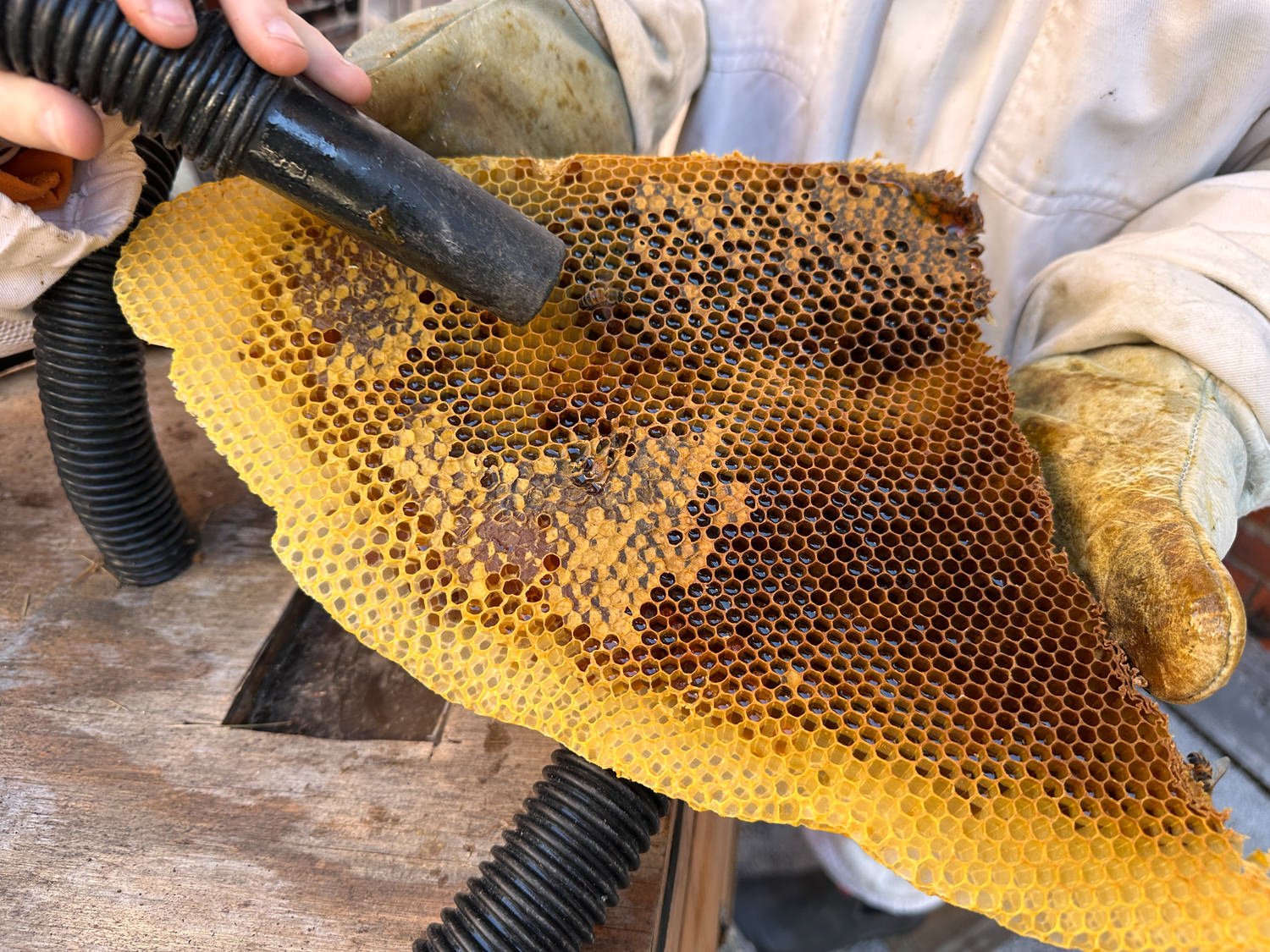
John Smiles prescribed spraying the remains of the nest with wood bleach before replacing the exterior panel … and sealing the cracks better this time. A former tenant says we could have surely heard the bees buzzing in the wall. But John says the colonies he has are actually pretty quiet. If he hadn’t removed the nest, he said it had room to double in size. He suspects the bees that somehow got inside the apartment died because there was nothing for them to eat and they couldn’t find a way to get back out.